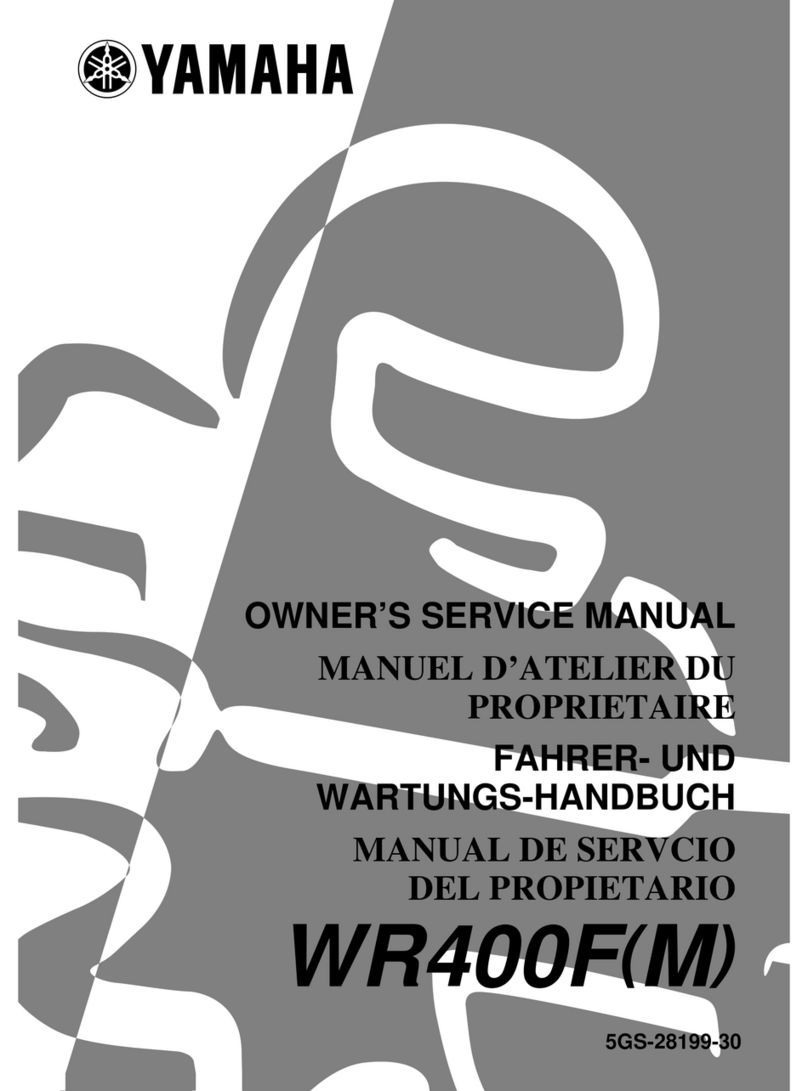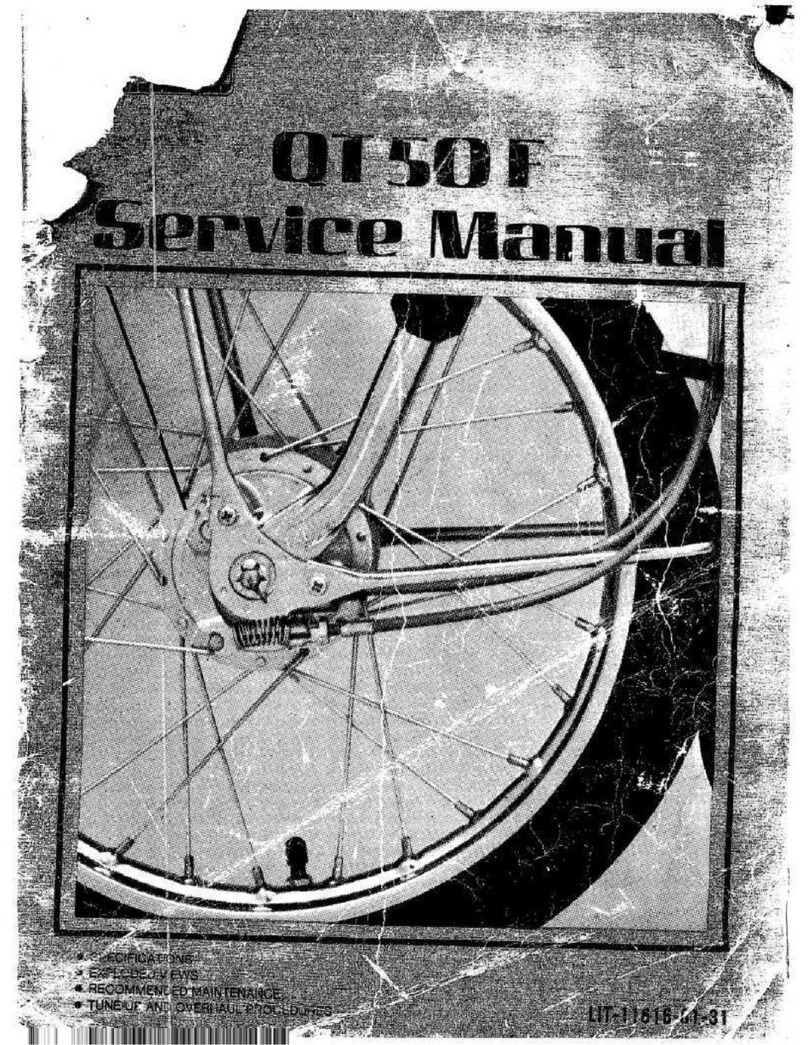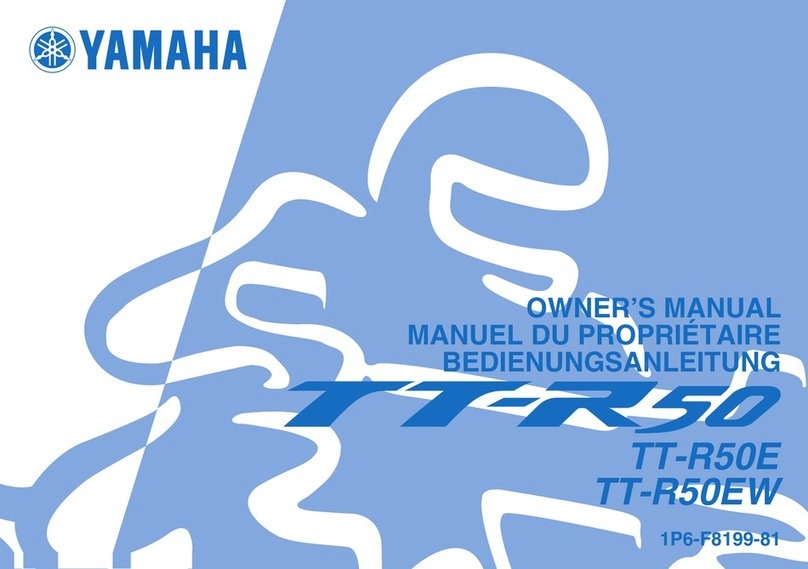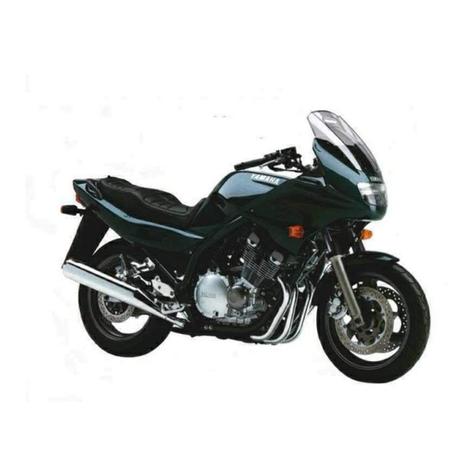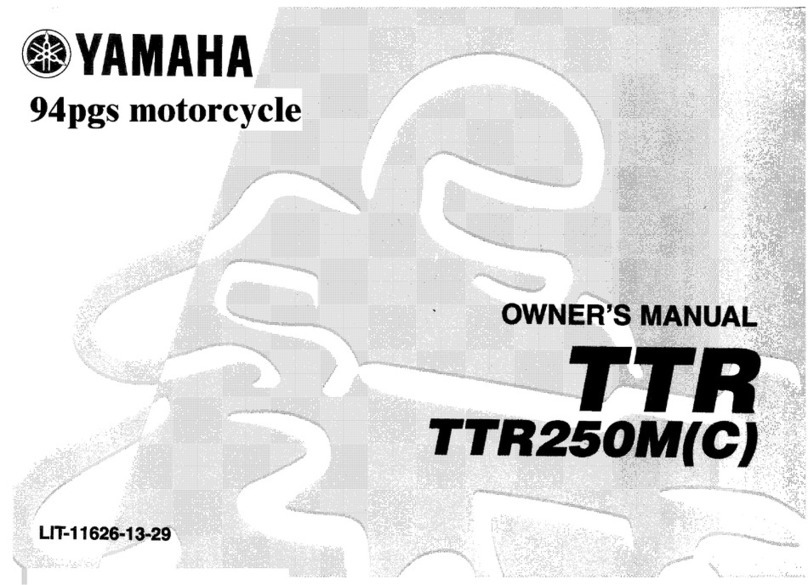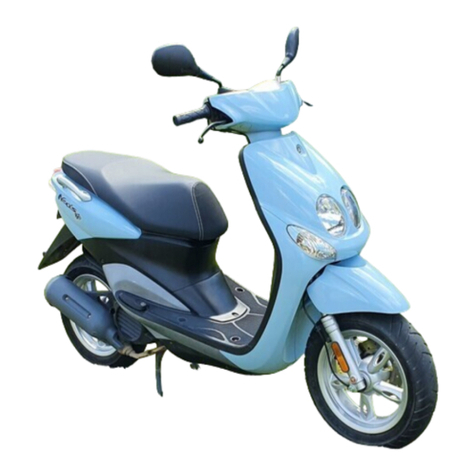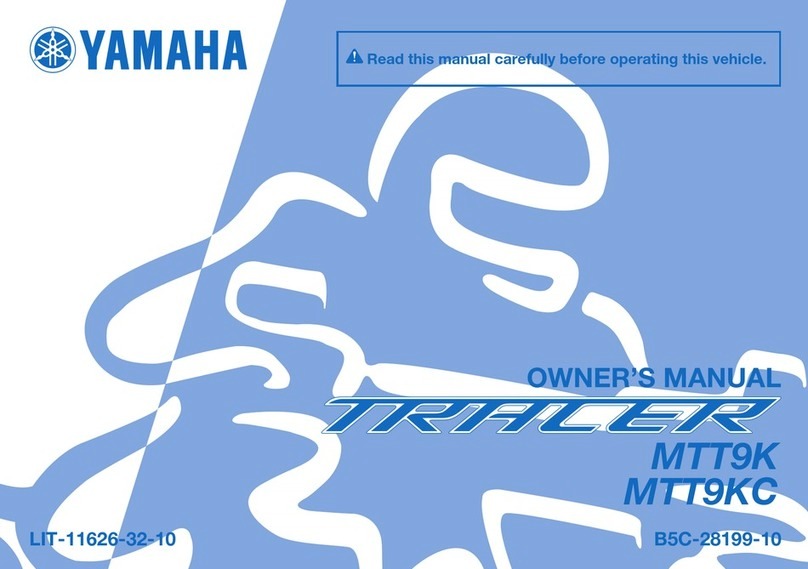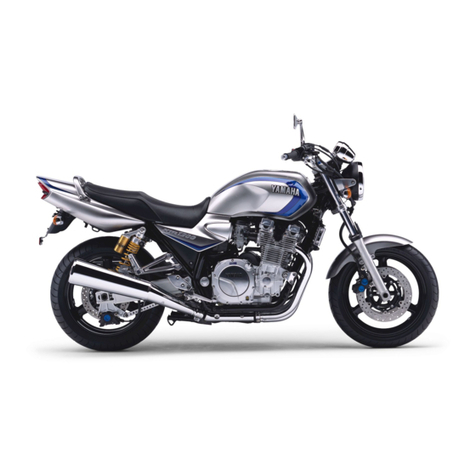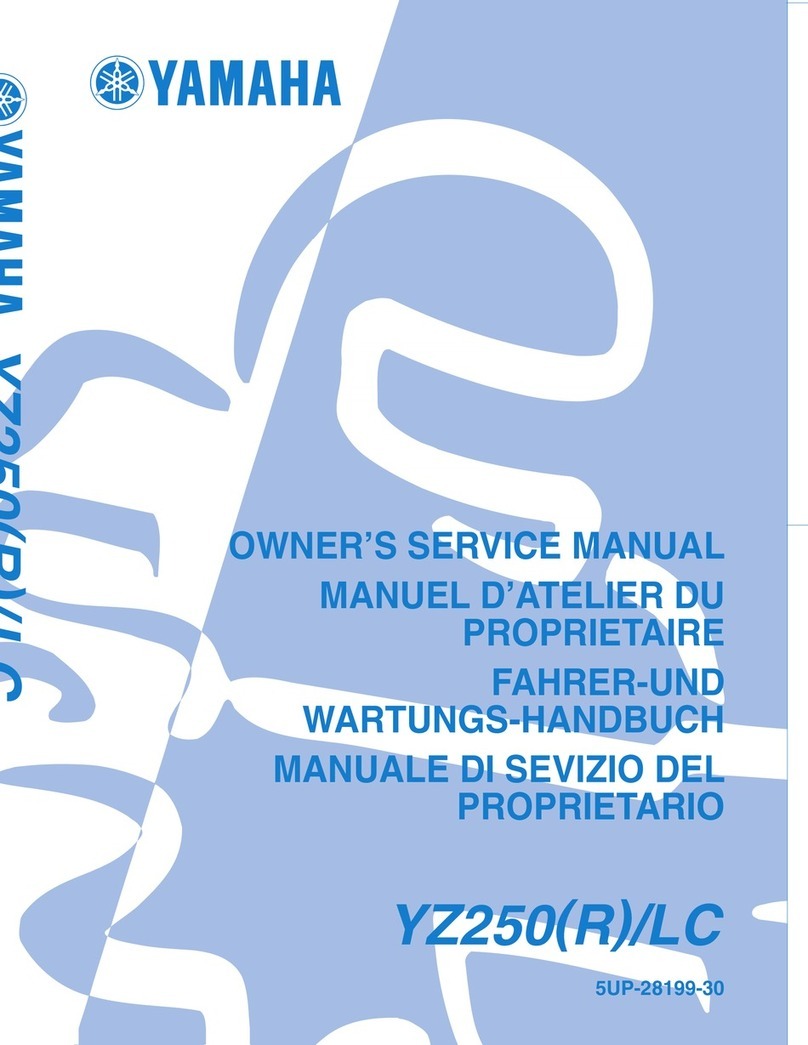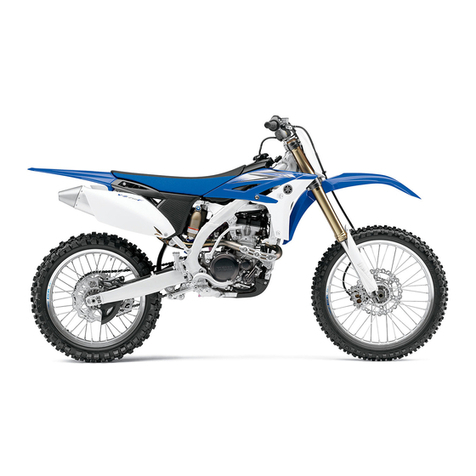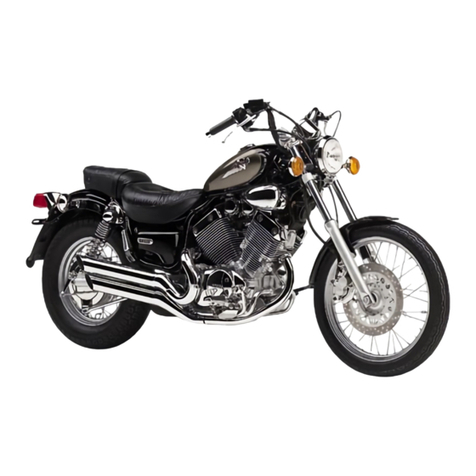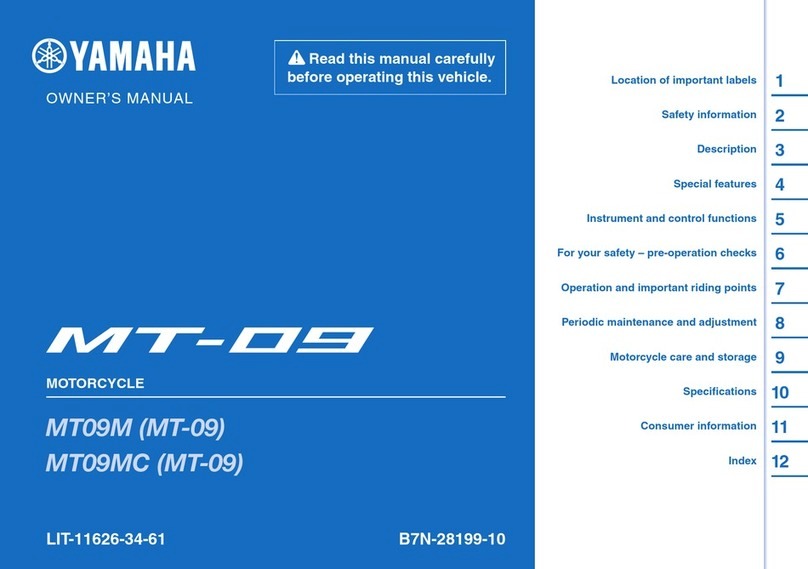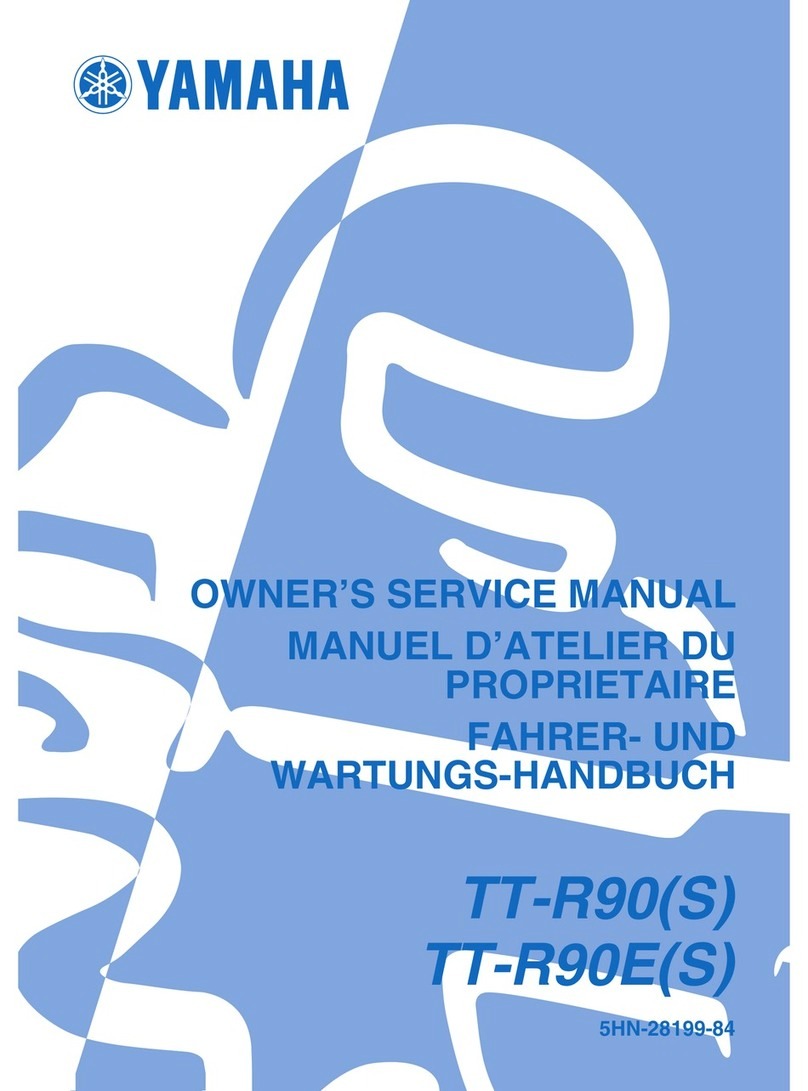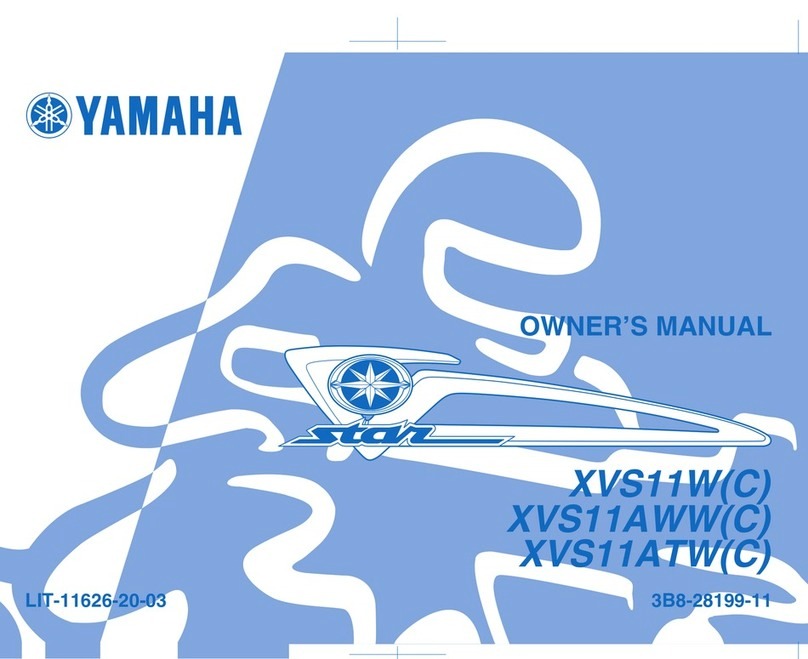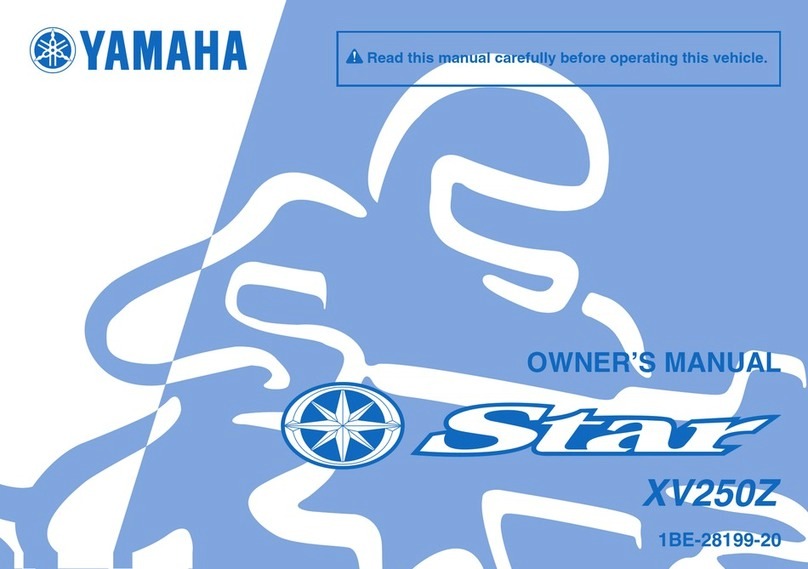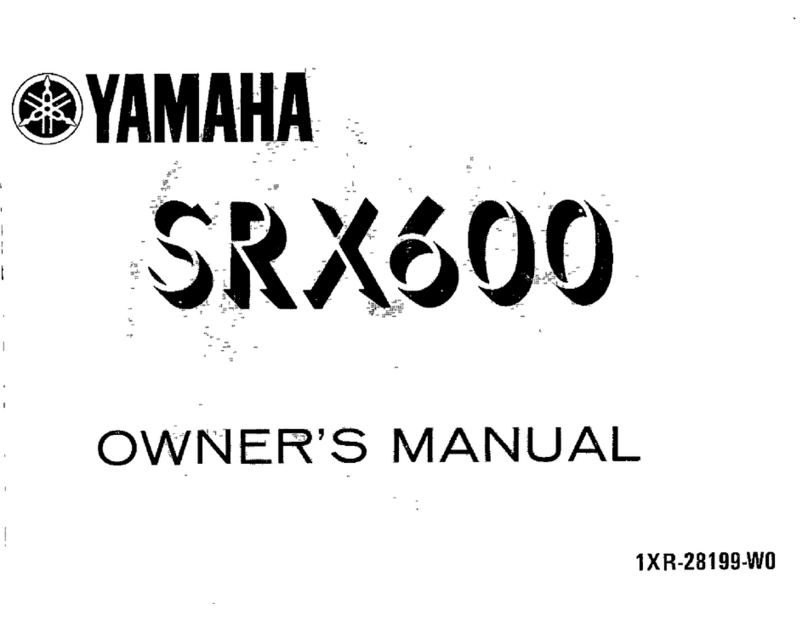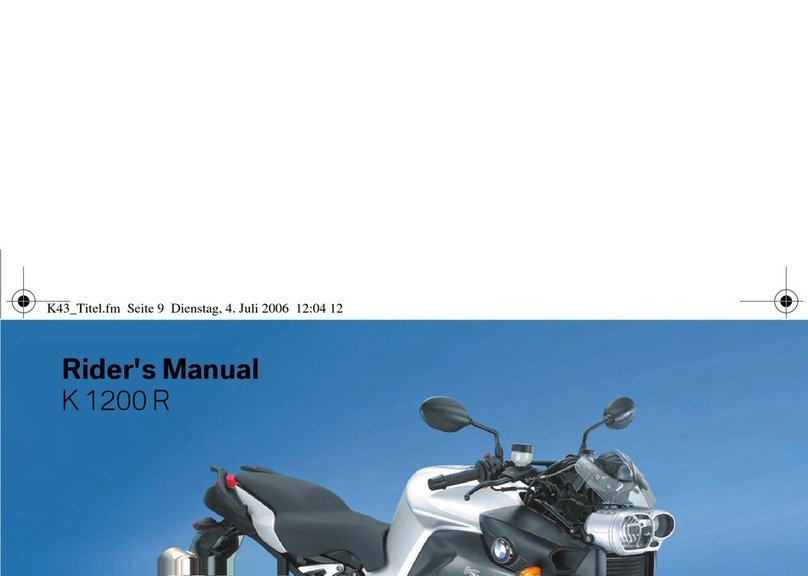
EAM20180
IMPORTANT
Congratulations on your purchase of a Yamaha YZ series. This model is the culmination of Yamaha’s
vast experience in the production of pacesetting racing machines. It represents the highest grade of
craftsmanship and reliability that have made Yamaha a leader.
This manual explains operation, inspection, basic maintenance and tuning of your machine. If you have
any questions about this manual or your machine, please contact your Yamaha dealer.
•Yamaha continually seeks advancements in product design and quality. Therefore, while this manual
contains the most current product information available at the time of printing, there may be minor dis-
crepancies between your machine and this manual. If you have any questions concerning this man-
ual, please consult your Yamaha dealer.
•This manual is intended for those who have basic knowledge and skill concerning the servicing of
Yamaha motorcycles (e.g., Yamaha dealers, service engineers, etc.). Those who have little knowl-
edge and skill concerning servicing are requested not to undertake inspection, adjustment, disassem-
bly, or reassembly only by reference to this manual. It may lead to servicing trouble and mechanical
damage.
EWA20270
PLEASE READ THIS MANUAL CAREFULLY AND COMPLETELY BEFORE OPERATING THIS
MACHINE. DO NOT ATTEMPT TO OPERATE THIS MACHINE UNTIL YOU HAVE ATTAINED A
SATISFACTORY KNOWLEDGE OF ITS CONTROLS AND OPERATING FEATURES AND UNTIL
YOU HAVE BEEN TRAINED IN SAFE AND PROPER RIDING TECHNIQUES. REGULAR INSPEC-
TIONS AND CAREFUL MAINTENANCE, ALONG WITH GOOD RIDING SKILLS, WILL ENSURE
THAT YOU SAFETY ENJOY THE CAPABILITIES AND THE RELIABILITY OF THIS MACHINE.
EAM30001
IMPORTANT MANUAL INFORMATION
Particularly important information is distinguished in this manual by the following notations.
This is the safety alert symbol. It is used to alert you to potential per-
sonal injury hazards. Obey all safety messages that follow this symbol
to avoid possible injury or death.
A WARNING indicates a hazardous situation which, if not avoided, could
result in death or serious injury.
A NOTICE indicates special precautions that must be taken to avoid
damage to the vehicle or other property.
A TIP provides key information to make procedures easier or clearer.

